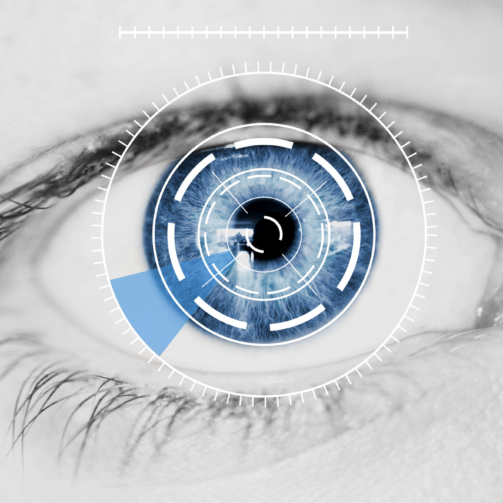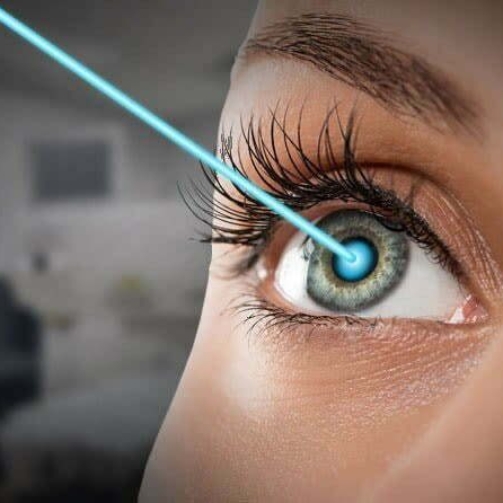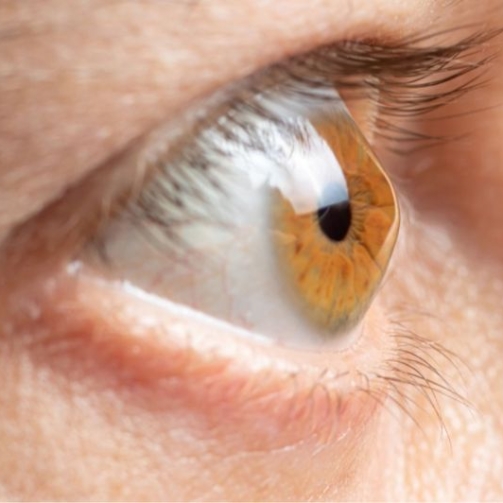Cataract surgery
What is Cataract Disease?
Cataract, also known as “waterfall,” is one of the most common eye diseases, where the transparency of the crystalline lens, located behind the iris, gradually changes and becomes cloudy. This affects the quality of vision, leading to blurred and unclear sight. These symptoms worsen quickly, necessitating cataract surgery using either surgical or localized methods. In this article, we will delve into this widespread medical condition, its causes, symptoms, and treatment methods, while highlighting the best eye doctor in the Arab world for performing this surgery successfully and professionally.
Cataract Prevalence Among Older Adults
The deterioration in vision quality, difficulties in reading, and the need for frequent prescription changes in glasses for the elderly are all indicators that point to cataracts. According to recent statistics, 20% of older adults aged between 65 and 74 years suffer from cataracts, while 50% of those over 74 years of age have this condition. These increasing statistics emphasize the importance of gaining a deeper understanding of this common medical condition, its causes, symptoms, and treatment methods, which we will explore in today’s comprehensive article—your complete guide to cataract surgery in all its details.
We hope for excellent follow-up from Dr. Nour El-Din Al-Hussein’s center.
Causes of Cataracts
There are no direct or specific causes for the development of cataracts. It is a result of the loss of transparency in the lens’s two parts: the cortical and nuclear sections. This loss happens due to structural changes caused by the oxidation of structural proteins, enzymes, nucleic acids, or membrane lipids through free radicals. These structural changes are triggered by various factors that eventually lead to cataract formation, including:
- Age-related cataracts: Also called “senile cataracts,” where the protein structure in the lens changes with aging, causing clouding. The risk of developing this type of cataract increases in people with diabetes.
- Congenital cataracts: Cataracts present from birth, usually due to genetic factors or viral infections during pregnancy.
- Eye diseases: Such as retinal detachment, uveitis, or glaucoma, which result from increased intraocular pressure.
- External injuries to the eye: That cause the lens capsule to crack and allow fluids to enter, leading to cataract formation.
- Radiation exposure: Such as in cases of radiation therapy for tumors.
- Metabolic diseases: Including conditions like chickenpox, measles, herpes, and toxoplasmosis.
- Side effects of some medications: Chronic use of steroid medications (corticosteroids) can contribute to cataract formation.
Symptoms of Cataracts
After understanding the concept and causes of cataracts, the most important question in the reader’s mind is, “What are the signs of cataract disease?” Cataracts typically do not cause any pain, but it is important to recognize them early to take necessary precautions and undergo timely treatment to prevent the condition from worsening. Here are the main symptoms:
- Gradual decline in vision.
- The need to frequently change glasses.
- Difficulty reading.
- Double vision in one eye.
- Seeing halos around light sources, especially at night.
- Increased nearsightedness.
- Difficulty seeing in low-light conditions.
- Reduced color contrast and fading.
- In severe cases, difficulty recognizing faces.
- Rapid worsening of astigmatism.
Cataract surgery
Cataract surgery is a simple and straightforward medical procedure that typically takes 30–40 minutes under local anesthesia. There are various types of this surgery depending on the techniques used, but generally, it involves making a surgical incision in the eye, removing the cloudy lens, and replacing it with a high-transparent artificial lens.
The importance of undergoing cataract surgery lies in avoiding complications that can occur if left untreated. If cataracts are not treated in a timely manner, they can cause: increased eye pressure, damage to the circular lens capsule, or even hardening and calcification of the cataract.
Diagnosing Cataracts
Before referring a patient for cataract surgery, several diagnostic procedures must be performed to confirm the necessity of the procedure. These diagnostic steps begin with a clinical examination, where the patient’s medical and family history is reviewed, along with any chronic treatments or previous accidents, which help determine the appropriate treatment for the cataracts. Additionally, there are several specialized diagnostic tools for cataracts, available in their latest versions at Dr. Nour El-Din Al-Hussein’s center, including:
- Visual Acuity Test: A traditional test involving a chart with various letters and numbers of different sizes and shapes. The doctor points to a letter or number, and the patient describes what they see. This helps determine how cataracts are affecting the patient’s daily activities.
- Intraocular Pressure Measurement: This test measures the pressure inside the eye to rule out glaucoma, which may occur alongside cataracts.
- Slit Lamp Examination: A high-powered microscope with intense light, shaped into a thin line, is directed at the eye. This device allows the doctor to examine both the front and back parts of the eye to confirm cataract diagnosis by observing changes in the crystalline lens.
- Ultrasound Imaging: High-frequency sound waves are used to measure the eye’s dimensions, diagnose cataracts, and determine the best type of replacement lens for the patient.
- Retinal Examination: This test focuses on the back parts of the eye, including the retina and the surrounding blood vessels, using dilating eye drops to provide clearer images.
Types of Cataract Surgery
Cataract treatment options can combine traditional methods with laser or ultrasound techniques, and in some cases, traditional surgery is used. The decision on which type of cataract surgery to use is made by Dr. Nour El-Din Al-Hussein based on his experience and a thorough assessment of the patient’s condition. Here’s a detailed look at each procedure:
Femto-Laser Cataract Surgery
One of the latest cataract surgeries, femtosecond laser surgery does not require an incision in the eye. It is performed in just 15 minutes and provides quick results, though it is more expensive. The steps involved include:
- Directing femtosecond laser beams onto the eye to make a very small incision, no larger than 2 millimeters.
- Using the laser to break the cloudy lens into tiny pieces.
- Suctioning out the fragmented lens pieces through a fine surgical probe that enters the surgical incision.
- Femtosecond laser beams can also help correct astigmatism if present.
- An artificial lens is then inserted and fixed behind the iris.
Afterward, the patient stays at the center for several hours, and longer if there are any special health concerns.
2. Phacoemulsification or Ultrasound Cataract Surgery
This procedure, also known as lens emulsification, uses ultrasound waves (phacoemulsification). It is completed in just 5 minutes and has a low risk of complications. The steps of the procedure are as follows:
- A small opening is made in the cornea and the outer capsule of the lens using a laser.
- The laser is then directed at the opened capsule to break the cloudy lens into tiny fragments.
- A phacoemulsification device is inserted through the tiny incision to suction out the fragmented lens material within the lens capsule.
- An artificial intraocular lens is then inserted into the lens capsule and fixed in place, with no need for sutures, as the incision heals within 24 hours.
- The patient can leave the center within 5–10 minutes after the procedure.
3. Traditional Cataract Surgery
This traditional approach to cataract treatment is more cost-effective than the previous methods but may occasionally lead to astigmatism. It is typically recommended for severe or hardened cataracts. The steps for this procedure include:
- Using a surgical scalpel, Dr. Nour El-Din Al-Hussein makes a larger incision compared to the other methods.
- The cloudy lens and its capsule are removed, or in some cases, the back part of the capsule is left intact.
- The surgeon then implants an artificial intraocular lens behind the iris.
- The surgical incision is closed with medical sutures, and a sterile dressing is applied.
This method is usually chosen when cataracts are particularly advanced or complicated, but it requires a longer recovery time compared to other modern techniques.
Stages of Cataract Surgery
At Dr. Nour Eldin Hussein’s Center – the best ophthalmologist in Egypt – every patient receives comprehensive healthcare, whether referred for surgery or not, as they are a top priority for the entire medical team. In cases where cataract surgery or any other procedure is required, the patient will receive care before, during, and after the surgery. To clarify our concept of medical care, here are the stages of performing cataract surgery for one of the patients at Dr. Nour Eldin Hussein’s Center:
1. Before the Surgery
After observing the common symptoms of cataracts and confirming the diagnosis by Dr. Nour Eldin Hussein through advanced diagnostic procedures at the center, the patient is referred for surgery, and a date is set.
Several days before the surgery, a series of health tests are conducted to assess the patient’s condition. The specialist doctor will take precise measurements of the eye to determine the most suitable technique for performing the surgery effectively.
At this stage, the cataract patient is advised to stop taking certain chronic medications, such as anticoagulants, to prevent bleeding during the surgery. The patient is also instructed to fast for 6 hours before the surgery, although the procedure can be performed without fasting if necessary.
2. During the Cataract Surgery
The most important aspect of preparing for the surgery is sterilization. In the operating room, complete sterilization of all tools and areas is carried out, along with cleaning the patient’s clothing and hands. The patient is given sterilized garments, head covering, and foot coverings to prevent any bacterial infections.
The patient then undergoes cataract surgery under local anesthesia using eye drops that numb the area and prevent pain. The surgery steps are completed in just a few minutes.
A sterile dressing is placed on the patient’s eye, and all vital signs are monitored for a few hours after the surgery to ensure stability before the patient is allowed to leave the center.
3. After the Surgery
The length of stay in the center after cataract surgery depends on the technique used. In general, the patient can resume normal activities the next day, provided they follow the recommended advice and guidelines, which will be provided later.
Recovery time can vary between patients. Some show improvement in the first few hours, while others may experience blurry vision during the first few days. However, the colors will appear with more contrast and brightness as the recovery progresses.
The Most Common Types of Lenses Used in Cataract Surgery
Each patient has unique characteristics and different health conditions, so a single type of replacement lens cannot be used for all cataract cases. The doctor selects the most appropriate lens based on specific criteria. The main types of lenses used are:
- Toric Lenses
These lenses are ideal for cataract patients who also suffer from astigmatism. Toric lenses correct astigmatism while also addressing the cataract, providing clear vision and accurate light refraction (100% correction). - Monofocal IOL (Intraocular Lenses)
Monofocal lenses are designed to treat cases of myopia (nearsightedness) or hyperopia (farsightedness). - Multifocal IOL
Multifocal lenses correct both myopia and hyperopia, eliminating the need for reading glasses and allowing clear vision at various distances. - Aspheric IOL
Aspheric lenses improve vision in low-light conditions and enhance reading quality at intermediate distances, making them ideal for night drivers and people who frequently use electronic devices.
Summary of Lens Types:
- Monofocal: For single-distance vision correction (either near or far).
- Advanced Intermediate (Bifocal): Designed for intermediate distances.
- EDOF (Extended Depth of Focus): Lenses providing a continuous focus range.
- Trifocal: Lenses that provide three focal points (near, intermediate, and far).
- Toric: For correcting astigmatism.
Premium IOL (High-Quality Lenses):
These lenses are soft and designed to be injected into the eye with a syringe. They are non-reactive with the body and provide high-quality vision correction.
Cost of Cataract Surgery in 2025
Many patients are concerned about the cost of cataract surgery. It is important to note that the cost can vary and is never the same for two patients. This is because the cost is influenced by several factors, including:
- The readiness and reputation of the medical center or hospital where the surgery is performed.
- The surgeon’s experience and track record of successful cataract surgeries.
- The type of replacement lens to be implanted.
- The technique used in the cataract surgery (laser surgery is the most expensive).
Best Cataract Surgeon in Egypt
Dr. Nour Eldin Hussein is renowned as the best cataract surgeon in Egypt, and his name is synonymous with success and pioneering innovations in the field of ophthalmology and surgery. His expertise is recognized both in Egypt and internationally, having held prestigious positions thanks to his proficiency. Dr. Hussein is a professor of ophthalmology and surgery at Ain Shams University, a Fellow of the Royal College of Surgeons in England, and a Fellow of the World Council of Ophthalmology in Switzerland.
In addition, he is a member of both the Egyptian and European Societies of Ophthalmic Surgery and a member of the Egyptian Ophthalmological Society. Dr. Nour Eldin has also become a key figure in academic ophthalmology, serving as a member of the European Society for Advanced Studies in Ophthalmology and the European Society for Corneal, Cataract, and Lens Implant Surgery, along with his membership in the European Society for Retina Laser Surgery.
Dr. Nour Eldin Hussein’s international reputation and high level of professional expertise have earned him the title of the best ophthalmologist in Egypt and abroad. His clinic is equipped with the latest state-of-the-art devices and supported by an experienced team of medical professionals. He has built strong, trusted relationships with his patients, making his clinic the first choice for anyone looking to restore their vision with exceptional care.
With over 21,000 successful cataract surgeries performed, Dr. Hussein has earned a reputation for achieving 100% success rates. Choosing Dr. Nour Eldin Hussein for cataract surgery is an excellent decision for those seeking superior quality eye care and exceptional attention to their individual needs.
Frequently Asked Questions About Cataract Surgery
Although we have covered the most important and essential information regarding cataract surgery in detail, there are some finer points that need to be addressed. Below are answers to some common questions:
What are the side effects of cataract surgery?
The side effects of cataract surgery are generally very mild and may include:
- Dry eyes
- Blurry vision in the first few hours
- Headache, which usually subsides with regular pain relievers
- Eye redness
- Continuous tearing on the first day
- Decreased vision quality for several hours
Can cataracts be treated with medication?
No, no medication has been proven effective in treating cataracts to date. The best and only treatment option is cataract surgery, which should be performed by a qualified and experienced ophthalmologist, such as Dr. Nour Eldin Hussein.
What is the success rate of cataract surgery?
The success rate of cataract surgery at Dr. Nour Eldin Hussein’s clinic is 99%, by the grace of God.
When will the results of cataract surgery be visible?
Vision improvement can be noticed as early as two days after cataract surgery, and the quality of vision typically stabilizes within two weeks. However, in cases of chronic conditions such as diabetes, the results may take longer to manifest.
What are the important post-surgery instructions after cataract surgery?
Dr. Nour Eldin Hussein recommends the following instructions to ensure full recovery and avoid any potential complications:
- Adhere to prescribed eye drops as per the doctor’s instructions
- Avoid rubbing or scratching the eye
- Do not drive during the first few days after the surgery
- Refrain from using eye makeup for at least a week
- Limit the use of mobile phones or computers for extended periods
- Avoid water contact with the eye during washing or showering
- Stay away from swimming for at least two weeks after surgery
- Wear sunglasses during midday
- Wear an eye shield while sleeping for a few days after surgery
- Avoid strenuous physical activities or lifting heavy weights
- Protect your eyes from dust, sand, or smoke exposure
Can cataract surgery be performed on both eyes at the same time?
No, cataract surgery is usually performed on one eye at a time. The second eye is typically treated after a certain period of healing to ensure optimal recovery.
In conclusion, this was the most important information about the cataract surgery, its concept, types, and precise stages. We also learned about the condition of cataracts, the necessity of treating it, and the best ophthalmologist in Egypt and abroad to perform cataract surgery with tens of thousands of successful operations. May you be well..





